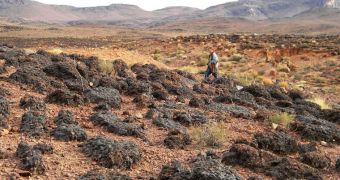Trilobites, brachiopods, corals and other sea creatures can be found in abundance in rocks lying in a Moroccan desert. Experts discovered an ancient seabed at this location. The landscape feature is estimated to be about 400 million years old.
This means that the lake dried out during the Devonian Period. When this happened, numerous animals and organisms were left embedded in the mud, and then eventually went on to become fossils.
Researchers are currently scouting the ancient lake bed on foot, in a bid to discover as many species as possible. This is helping them get a better understanding of how life looked like in the distant past.
Some of the remnants experts found thus far look like aliens, but they are undoubtedly remnants of lifeforms that once scoured Earth's waters. On the other hand, numerous species experts identified in Morocco can still be seen in the oceans today.
The new study was organized by the Ibn Battuta Center, which is based at the International Research School of Planetary Sciences. Its main purpose is to underline the similarities between this African desert and the surface of Mars.
Many experts believe that there was once life on the Red Planet, but they also agree that finding sings of microbial life in its immensity is a very complex task. As such, scientists are now validating search methods that could enable them to find such fossils faster, Space reports.
For one thing, some say, Martian microbes – if they have survived to this day – may be locked away in underground reservoirs covered by 3.5-billion-year-old sedimentary rocks. It would take some fairly advanced equipment and technology to discover these microorganisms.
Over the last 40 years or so, increasing number of studies have began piling up evidence that liquid water once flowed on the surface of Mars. While this is not certain at this point, the majority of available evidence seems to indicate in this direction.
In the Moroccan desert, experts are investigating mounds that they say were hydrothermal vents way back when the lake was still there. What they are trying to learn is how much of the petrified structures were caused by the vents, and how much by microorganisms that attached themselves to the objects.
This study is very important, considering the fact that the Red Planet revealed similar structures in recent studies. Figuring out what happened here is a good starting point to figuring out what happened on Mars billions of years ago.

 14 DAY TRIAL //
14 DAY TRIAL //